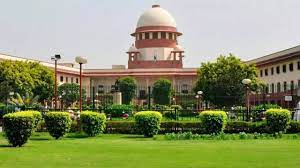Article 370’s abrogation sparked legal debates as advocates Dave and Dhavan argued it was a masterpiece of statesmanship, fostering federalism while integrating Jammu and Kashmir. They contended the move undermined pluralistic ideals, required state consent, and disregarded historical context, challenging the legality and wisdom of the decision.
Table of Contents
Challenges to Article 370 Abrogation: Legal Debate and Constitutional Significance
In 2019, a series of petitions were brought before the Supreme Court challenging the abrogation of Article 370 and the enactment of the Jammu and Kashmir Reorganisation Act, 2019. This legal battle delved into the heart of India’s constitutional fabric, exploring the implications of transforming the erstwhile State of Jammu and Kashmir into two Union Territories. The contentious debates revolved around the historical context, the intricacies of federalism, and the scope of constitutional powers.
Article 370: A Symbol of Statesmanship or a Relic?
Article 370 of the Indian Constitution granted special autonomy to the State of Jammu and Kashmir. This autonomy encompassed a wide array of matters, including the ability to have its own constitution, a separate flag, and a certain degree of autonomy in legislative matters. Advocates Dave and Dhavan contended that this autonomy was a reflection of India’s commitment to recognizing and accommodating the diverse cultural, linguistic, and regional variations within the country.
The advocates argued that Article 370 was a strategic measure intended to accommodate the unique circumstances of Jammu and Kashmir’s accession to India in 1947. It was viewed as a bridge that facilitated the integration of the region into the Indian Union while respecting its distinct identity and historical background.
Mr. Dhavan emphasized that the abrogation of Article 370 in August 2019 was not only legally questionable but also carried profound implications for India’s federal structure. He maintained that the provision was an embodiment of India’s commitment to a pluralistic and accommodative federalism, ensuring that the constitutional fabric could adapt to the diverse needs of its constituent units.
Constitutional Powers and the Identity of Jammu and Kashmir
A significant facet of the legal discourse revolved around the extent of constitutional powers wielded by the Parliament. The advocates contested the Parliament’s authority to unilaterally alter the identity of the State of Jammu and Kashmir. They highlighted that the Parliament’s assumption of the role of the State Legislature was an overreach, as it fundamentally changed the very essence of the region. The contentious issue of sovereignty and the transfer of power from the princely state to India in 1947 came to the forefront.
In response, the Supreme Court acknowledged the complex nature of sovereignty transfer and the constitutional dynamics involved. The Bench, headed by Chief Justice D.Y. Chandrachud, noted that India’s Constitution had already outlined its status as a Union of States, which included Jammu and Kashmir. The Court underlined that the accession of Jammu and Kashmir in 1947 marked the completion of the transfer of sovereignty. This perspective contextualized the broader constitutional framework within which the debates were unfolding.
Constitutional Bench’s Scrutiny: Balancing Sovereignty and Identity
The Constitution Bench, comprising Chief Justice D.Y. Chandrachud and Justices Sanjay Kishan Kaul, Sanjiv Khanna, B.R. Gavai, and Surya Kant, grappled with the complexities of the case. The Bench acknowledged that the challenges to the abrogation were not merely legal matters but had profound implications for the identity and sovereignty of Jammu and Kashmir.
In its observation, the Bench addressed the contention that some elements of sovereignty were retained even after Article 370’s abrogation. The Court’s response was rooted in a meticulous examination of Schedule 1 of the Indian Constitution, which enumerates States and Union Territories. By including Jammu and Kashmir in this list, the Court emphasized the integration of the region into India’s constitutional framework.

Conclusion: Constitutional Discourse and the Path Forward
The legal battle surrounding the abrogation of Article 370 and the Jammu and Kashmir Reorganisation Act, 2019, illuminated the intricate interplay between constitutional powers, federalism, and regional identity. The Supreme Court’s hearings delved into the historical, legal, and philosophical dimensions, shaping the discourse on the transformation of Jammu and Kashmir. As India’s constitutional journey continues, the ramifications of this landmark case will continue to reverberate, influencing the contours of federalism and constitutional interpretation.












